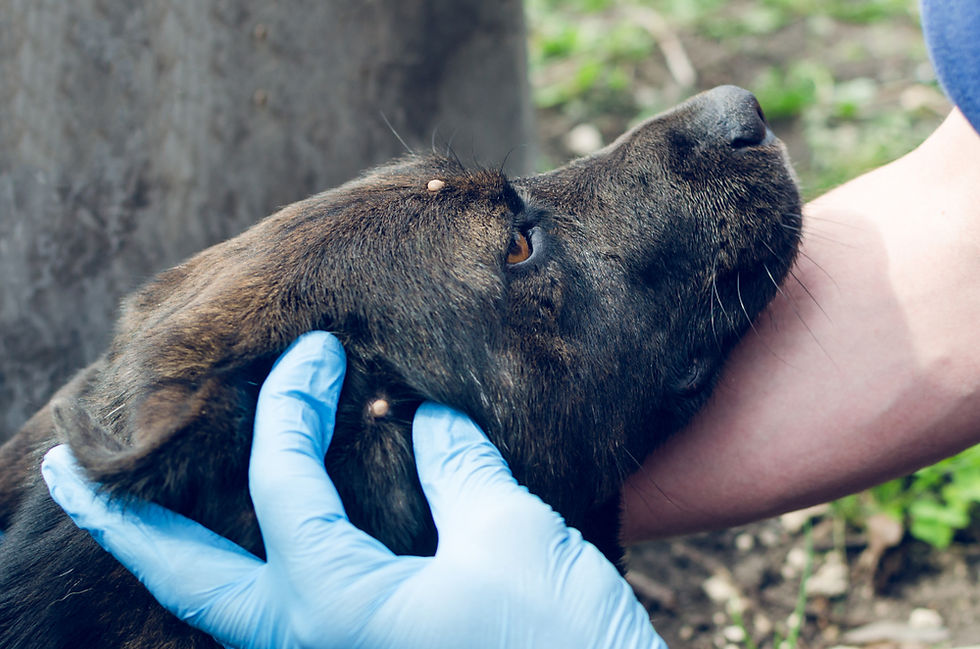Innovative Eco-Friendly Pest Control Solutions for Your Home
- Oscar Melchor
- Aug 28
- 3 min read
Pest control is a necessary part of maintaining a healthy and comfortable home environment. However, traditional pest control methods often rely on harsh chemicals that can harm the environment, pets, and even humans. Fortunately, there are innovative non-toxic pest solutions that are both effective and safe. These methods prioritize sustainability and minimize ecological impact while keeping your home pest-free.
Understanding Non-Toxic Pest Solutions for a Safer Home
Non-toxic pest solutions focus on using natural, biodegradable, and non-harmful substances or techniques to manage pests. These solutions avoid synthetic chemicals and pesticides, reducing the risk of contamination and health hazards. Here are some popular non-toxic pest control methods:
Physical Barriers: Installing screens, sealing cracks, and using door sweeps prevent pests from entering your home.
Natural Predators: Encouraging beneficial insects like ladybugs and spiders that prey on harmful pests.
Organic Sprays: Using plant-based oils such as neem oil, peppermint oil, or garlic spray to repel insects.
Traps: Employing sticky traps or pheromone traps to capture pests without chemicals.
These approaches not only protect your family but also contribute to a healthier ecosystem around your home.

Practical Tips for Implementing Non-Toxic Pest Solutions
Implementing non-toxic pest solutions requires a combination of prevention, monitoring, and targeted treatment. Here are actionable recommendations to help you get started:
Maintain Cleanliness: Regularly clean your home, especially kitchen areas, to remove food crumbs and spills that attract pests.
Eliminate Standing Water: Fix leaks and remove stagnant water sources to reduce breeding grounds for mosquitoes and other insects.
Use Essential Oils: Diffuse or spray essential oils like eucalyptus, lavender, or citronella in problem areas to deter pests.
Introduce Beneficial Insects: If you have a garden, consider releasing ladybugs or praying mantises to naturally control aphids and other pests.
Seal Entry Points: Inspect your home for gaps around windows, doors, and pipes, and seal them with caulk or weatherstripping.
By combining these steps, you create an environment that is inhospitable to pests without relying on toxic chemicals.

What is the Most Environmentally Friendly Pesticide?
When it comes to environmentally friendly pesticides, the goal is to use substances that break down quickly, have low toxicity, and target only the pests without harming beneficial organisms. Some of the most eco-friendly pesticides include:
Neem Oil: Extracted from the neem tree, it disrupts the life cycle of many insects and is safe for humans and pets.
Diatomaceous Earth: A natural powder made from fossilized algae that damages the exoskeleton of insects, causing dehydration.
Insecticidal Soap: Made from potassium salts of fatty acids, it kills soft-bodied insects like aphids and mites on contact.
Bacillus thuringiensis (Bt): A naturally occurring bacterium that targets specific insect larvae without affecting other wildlife.
These options are biodegradable and have minimal environmental impact, making them ideal for sustainable pest management.

Integrating Eco-Friendly Pest Control into Your Lifestyle
Incorporating eco-friendly pest control into your daily routine can be simple and rewarding. Here are some ways to make it part of your lifestyle:
Gardening Practices: Use companion planting to repel pests naturally. For example, marigolds deter nematodes and basil repels flies.
Composting: Proper composting reduces pest attraction and enriches soil without chemical fertilizers.
Regular Inspections: Check your home and garden frequently for early signs of pest activity to address issues promptly.
Educate Family Members: Teach everyone in your household about the importance of non-toxic pest control and how to maintain a pest-free environment.
By adopting these habits, you contribute to a safer home and a healthier planet.
Long-Term Benefits of Non-Toxic Pest Solutions
Choosing non-toxic pest solutions offers numerous long-term advantages:
Healthier Indoor Air Quality: Avoiding chemical sprays reduces indoor air pollution and respiratory risks.
Protection for Pets and Children: Non-toxic methods eliminate exposure to harmful substances for vulnerable family members.
Sustainability: These solutions support biodiversity and reduce chemical runoff into soil and water.
Cost-Effectiveness: Many natural remedies and preventive measures are inexpensive and reusable.
Peace of Mind: Knowing your home is protected without compromising safety brings comfort and confidence.
Embracing innovative, eco-conscious pest control methods is a smart investment in your home’s future.
By exploring and applying these innovative non-toxic pest solutions, you can effectively manage pests while protecting your family and the environment. Start small, stay consistent, and enjoy a pest-free home that aligns with your values of sustainability and safety.






Comments